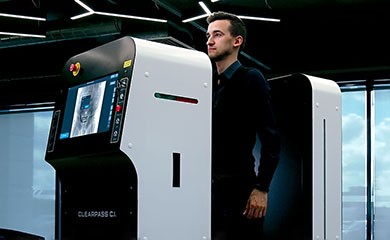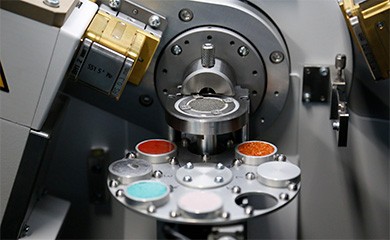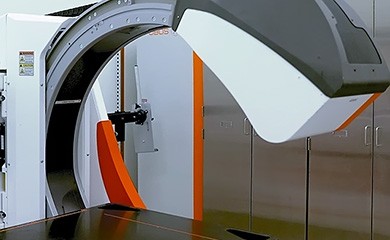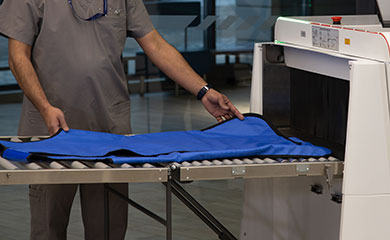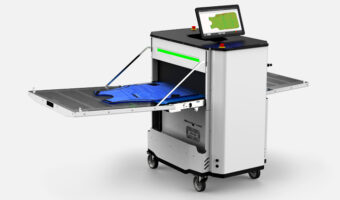

27 May 2023
Shielding the Unseen: Your Ultimate Guide to Mastering Safety in a World of Radiation
The traditional method of determining the properties of X-ray protective clothing, whether using medical X-ray installations or a method for assessing weakening properties, is limited. LINEV Systems has developed the FLOWD X-ray flaw detection system, which utilizes innovative algorithms to obtain comprehensive information about the homogeneity of the test materials. FLOWD functions by scanning large surfaces of an object with a narrow fan beam of radiation and a linear dual-energy detector, effectively addressing the drawbacks of traditional methods. Furthermore, it incorporates a new high-precision technique for determining attenuating properties, potentially setting a new standard in X-ray protective clothing testing.

How Radiation Causes Disease
When an x-ray photon interacts with a person’s body, it collides with atoms within the cells. This collision results in the displacement of electrons from the atoms, disrupting their electronic balance and transforming them into ions or electrically charged atoms. These compromised atoms create disturbances within the cells, leading to the damage of molecules and disruption of DNA. If a significant number of atoms and cells are affected, it can give rise to various tangible health conditions, such as:
– Radiation Burns:
Prolonged or intense exposure to x-rays can cause burns on the skin, similar to sunburn. The severity of the burns can vary, ranging from mild redness and irritation to more severe blistering and tissue damage.
– Radiation Sickness:
Exposure to high levels of x-ray radiation can result in radiation sickness. Symptoms may include nausea, vomiting, fatigue, hair loss, and in severe cases, damage to the bone marrow and immune system.
– Radiation-Induced Cancers:
Long-term exposure to high doses of radiation, including x-rays, can increase the risk of developing certain types of cancers. For example, repeated exposure to dental x-rays without proper shielding can potentially increase the risk of oral cancers.
– Genetic Mutations:
X-rays can cause damage to the DNA molecules within cells. This damage can lead to genetic mutations, which may increase the risk of genetic disorders or birth defects in both the affected individual and their offspring. It is important to note that the likelihood and severity of these health conditions depend on various factors, including the duration and intensity of x-ray exposure, the specific body part exposed, and an individual’s susceptibility. Medical professionals take precautions to minimize risks by following safety protocols and utilizing shielding techniques during x-ray procedures.
Protective Clothing Used to Block Radiation Exposure
X-ray protective clothing, commonly referred to as lead aprons or radiation protection aprons, plays an essential role in shielding individuals from harmful X-ray radiation exposure. They are widely utilized in both medical and industrial settings where exposure could present a threat. These protective garments are typically constructed of lead or lead-equivalent materials such as lead composite or non-lead alternatives that have high atomic numbers and densities, making them adept at absorbing and dissipating high-energy x-ray photons. Lead or lead-equivalent materials absorb or deflect X-ray photons that come into contact with them, limiting how much can pass through to reach the wearer and cause cell damage due to radiation exposure. This greatly lowers the risks associated with radiation.
Its efficacy depends on factors like the thickness of the material used, type and energy of radiation source, and duration of exposure. Therefore, the use of such protective apparel must form part of a comprehensive radiation protection program which also includes time/distance/shielding strategies in order to guarantee its efficacy in mitigating radiation risks.
Types of Radiology Personal Protective Equipment
Radiology PPE is designed to shield healthcare workers and patients from harmful radiation exposure. The selection of radiology PPE can vary depending on the type of radiation, the level of exposure, and the specific procedure being carried out. Here are some of the most commonly used types of radiology PPE:
Lead Aprons: The most commonly known piece of radiology PPE, lead aprons provide substantial protection from X-rays. These are available in various designs and sizes, including full wrap-around and vest-skirt styles. Modern aprons often use lead-composite materials, which are lighter than pure lead but offer comparable protection.
Lead Gloves: These are used to protect the hands, which can often be close to the radiation source during certain procedures. Like lead aprons, they are typically made of lead or lead-equivalent materials.
Thyroid Shields: These are worn around the neck to protect the thyroid gland, which is particularly sensitive to radiation. Thyroid shields can be worn separately or attached to a lead apron.
Radiation Glasses: Also known as lead glasses, these protect the eyes from radiation. The lenses are made from leaded glass that absorbs the X-rays and prevents them from reaching the sensitive cells of the eyes.
Lead Caps: These provide protection to the head, which is especially important during procedures where the head could be exposed to scatter radiation.
Radiation Shields: These are not worn but are used in the environment to shield workers from radiation exposure. They include mobile barriers, table curtains, and bucky slot covers that are placed strategically to absorb scattered radiation.
Dosimeters: While not a protective shield, dosimeters are a critical part of PPE. These devices measure the amount of radiation exposure over time, ensuring it stays within safe limits.
The Effects of Radiation On Health
Radiation is a potential health hazard that arises from exposure to sources such as X-rays. When an X-ray photon collides with a person’s body, it interacts with the atoms within their cells. During these collisions, electrons are knocked from atoms, which changes their electronic balance and turns them into ions. The process of ionization can be harmful to cells because it can damage molecules and disrupt the DNA. Depending on the severity of the damage, various health conditions may arise. For example, if cells in the skin or other tissues are damaged, this can lead to burns or radiation sickness. In some cases, exposure to radiation can also increase the risk of developing cancer or other long-term health problems.
The effects of radiation exposure depend on various factors, including the type and amount of radiation, the duration of exposure, and the individual’s age and overall health. Therefore, it’s crucial to take appropriate precautions to minimize radiation exposure and to seek medical attention if you believe you’ve been exposed to harmful levels of radiation.

Protective clothing X-ray testing machine
How Radiation Causes Disease
When an x-ray photon interacts with a person’s body, it collides with atoms within the cells. This collision results in the displacement of electrons from the atoms, disrupting their electronic balance and transforming them into ions or electrically charged atoms. These compromised atoms create disturbances within the cells, leading to the damage of molecules and disruption of DNA. If a significant number of atoms and cells are affected, it can give rise to various tangible health conditions, such as:
– Radiation Burns:
Prolonged or intense exposure to x-rays can cause burns on the skin, similar to sunburn. The severity of the burns can vary, ranging from mild redness and irritation to more severe blistering and tissue damage.
– Radiation Sickness:
Exposure to high levels of x-ray radiation can result in radiation sickness. Symptoms may include nausea, vomiting, fatigue, hair loss, and in severe cases, damage to the bone marrow and immune system.
– Radiation-Induced Cancers:
Long-term exposure to high doses of radiation, including x-rays, can increase the risk of developing certain types of cancers. For example, repeated exposure to dental x-rays without proper shielding can potentially increase the risk of oral cancers.
– Genetic Mutations:
X-rays can cause damage to the DNA molecules within cells. This damage can lead to genetic mutations, which may increase the risk of genetic disorders or birth defects in both the affected individual and their offspring. It is important to note that the likelihood and severity of these health conditions depend on various factors, including the duration and intensity of x-ray exposure, the specific body part exposed, and an individual’s susceptibility. Medical professionals take precautions to minimize risks by following safety protocols and utilizing shielding techniques during x-ray procedures.
Protective Clothing Used to Block Radiation Exposure
X-ray protective clothing, commonly referred to as lead aprons or radiation protection aprons, plays an essential role in shielding individuals from harmful X-ray radiation exposure. They are widely utilized in both medical and industrial settings where exposure could present a threat. These protective garments are typically constructed of lead or lead-equivalent materials such as lead composite or non-lead alternatives that have high atomic numbers and densities, making them adept at absorbing and dissipating high-energy x-ray photons. Lead or lead-equivalent materials absorb or deflect X-ray photons that come into contact with them, limiting how much can pass through to reach the wearer and cause cell damage due to radiation exposure. This greatly lowers the risks associated with radiation.
Its efficacy depends on factors like the thickness of the material used, type and energy of radiation source, and duration of exposure. Therefore, the use of such protective apparel must form part of a comprehensive radiation protection program which also includes time/distance/shielding strategies in order to guarantee its efficacy in mitigating radiation risks.
Types of Radiology Personal Protective Equipment
Radiology PPE is designed to shield healthcare workers and patients from harmful radiation exposure. The selection of radiology PPE can vary depending on the type of radiation, the level of exposure, and the specific procedure being carried out. Here are some of the most commonly used types of radiology PPE:
Lead Aprons: The most commonly known piece of radiology PPE, lead aprons provide substantial protection from X-rays. These are available in various designs and sizes, including full wrap-around and vest-skirt styles. Modern aprons often use lead-composite materials, which are lighter than pure lead but offer comparable protection.
Lead Gloves: These are used to protect the hands, which can often be close to the radiation source during certain procedures. Like lead aprons, they are typically made of lead or lead-equivalent materials.
Thyroid Shields: These are worn around the neck to protect the thyroid gland, which is particularly sensitive to radiation. Thyroid shields can be worn separately or attached to a lead apron.
Radiation Glasses: Also known as lead glasses, these protect the eyes from radiation. The lenses are made from leaded glass that absorbs the X-rays and prevents them from reaching the sensitive cells of the eyes.
Lead Caps: These provide protection to the head, which is especially important during procedures where the head could be exposed to scatter radiation.
Radiation Shields: These are not worn but are used in the environment to shield workers from radiation exposure. They include mobile barriers, table curtains, and bucky slot covers that are placed strategically to absorb scattered radiation.
Dosimeters: While not a protective shield, dosimeters are a critical part of PPE. These devices measure the amount of radiation exposure over time, ensuring it stays within safe limits.
The Effects of Radiation On Health
Radiation is a potential health hazard that arises from exposure to sources such as X-rays. When an X-ray photon collides with a person’s body, it interacts with the atoms within their cells. During these collisions, electrons are knocked from atoms, which changes their electronic balance and turns them into ions. The process of ionization can be harmful to cells because it can damage molecules and disrupt the DNA. Depending on the severity of the damage, various health conditions may arise. For example, if cells in the skin or other tissues are damaged, this can lead to burns or radiation sickness. In some cases, exposure to radiation can also increase the risk of developing cancer or other long-term health problems.
The effects of radiation exposure depend on various factors, including the type and amount of radiation, the duration of exposure, and the individual’s age and overall health. Therefore, it’s crucial to take appropriate precautions to minimize radiation exposure and to seek medical attention if you believe you’ve been exposed to harmful levels of radiation.



